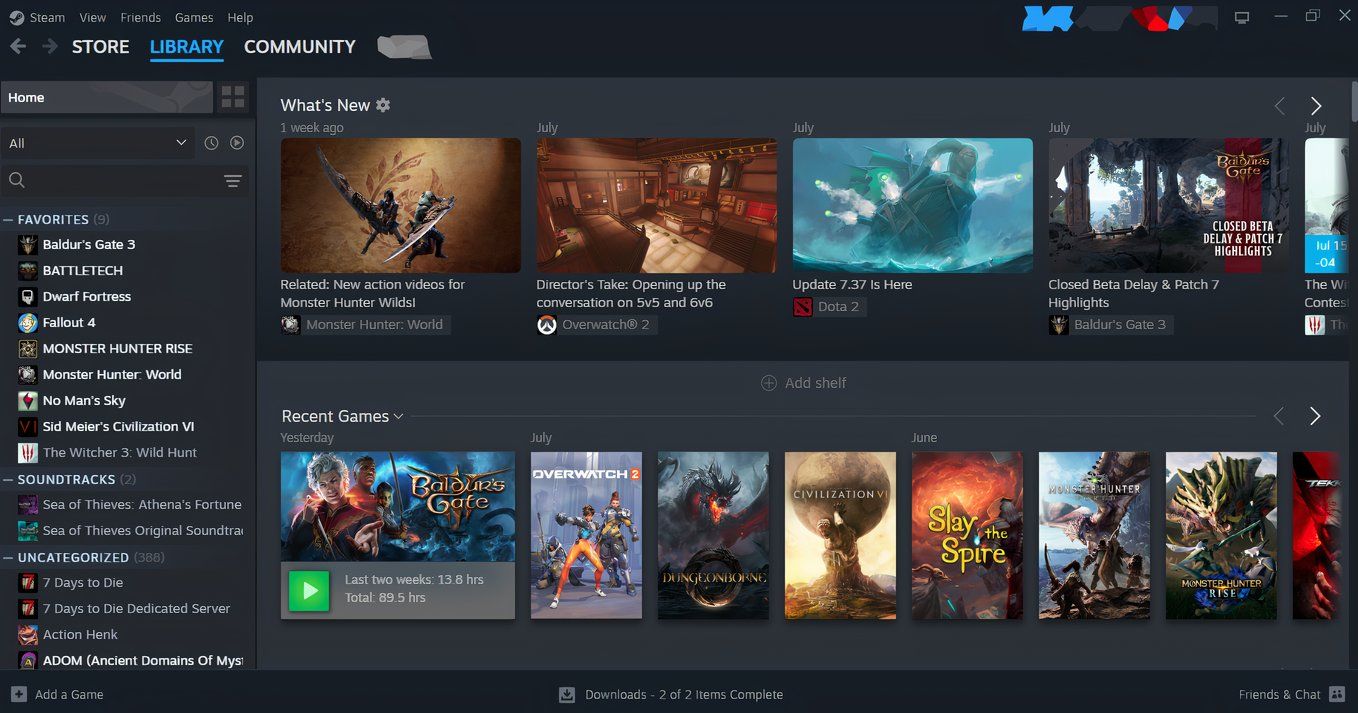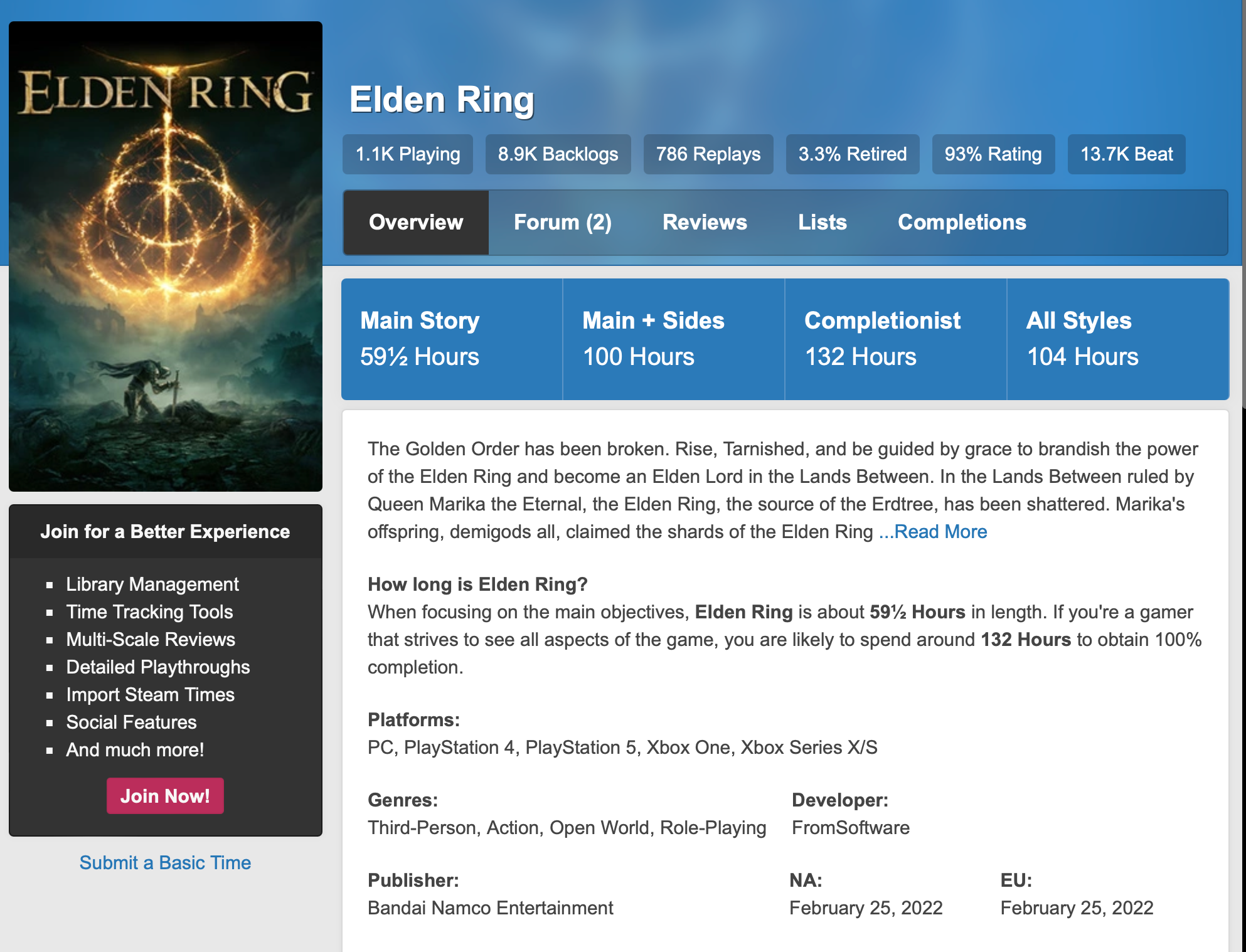Key Takeaways
- Prioritizing short games with strong storylines helps maximize enjoyment in limited gaming windows.
- Use Steam reviews and Metacritic ratings to filter out shovelware and full-length games that might not be worth the time commitment.
- A strict one-hour playtime limit for longer games can help decide whether the full game is worth the time investment before getting in too deep.
After collecting games from sales, bundles, and elsewhere, I have over 200 games in my Steam library and not enough time to play them all. This called for some prioritization. Here’s how I prioritized the games that are worth my time.
What’s In My Game Library: The Assessment Step
Clearing my gaming backlog required a defined process. The first thing I did was to set aside the games that had a recommended playthrough time of less than 20 hours. The shorter the game, the closer it got to the top of the list. Whether I had a few hours to burn or just a single hour a day to dedicate to gaming, I was certain that I could finish at least one of those in a month’s time.
Another thing that quickly stood out was that not all of these games had the same “hook” to them. I like story-heavy games, so I reordered the “short game” list to put the most story-heavy games at the top and others (like FPS games, which I’m not overly fond of) at the bottom of the list.
I also looked at the games that were obvious shovelware and tossed those out of the list. The Switch eShop is going through its own shovelware epidemic, so I was pleasantly surprised that only two titles from my Steam library were tossed out as shovelware.
Right away, I had a series of around twenty to thirty games I could reasonably get through, which interested me greatly. To narrow down the list further, I checked the Steam reviews on the store pages of each of these games. Those that came out as “mostly positive” went to the top of the queue, and those that had mixed or bad reviews dropped down the list.
The Lightweights: Trading Time For Fun
Like most adult gamers, I am busy with only short windows of time for gaming. While I won’t be switching to mobile gaming any time soon, I still like to play games in a bite-size format as often as possible. Get in, get something done, and get back out to do something else.
The short games at the top of my list were perfect for this. Some of these games were Indie titles, like A Short Hike, which had the cozy element I loved but didn’t require a lot of time investment. Many of these short games were indie games since they fit into such a perfect niche of games I don’t have to spend too much time on. The procedural or roguelike games also fell into the bite-size category since I could start a run and either finish it or get to a save point that I can resume later.
But what about the longer games? Well, I will be honest; some longer games also made it to the top of the list. Here are the criteria I used to judge them.
The Heavyweights: Judging Which Long Games Are Worth My Time
With the shortest fifteen games at the top of my list, I had a few month’s worth of gaming time sorted. But there was an entire section of my games catalog I hadn’t touched yet: longer games and those with continual progression. One of those two categories of games is just not something I could manage, and the MMOs immediately went out the window, as did the seasonal games like Path of Exile.
My rationale was that while I enjoyed some games with seasonal content, it just took too much time out of my gaming schedule to get to that seasonal content and enjoy it. A notable exception was Overwatch 2, which I still have installed solely for multiplayer play with a buddy or two who love it.
For the best of the rest, I looked at the quality of those games which I judged from reviews. I used the Steam store reviews posted on the game’s page, but I knew that sometimes, review bombing would happen. I used Metacritic to back up the reviews for these games. If the reviews said the game was good, it would go up the list. If either of the two sites had an issue with the game or thought that it wasn’t worth the player’s time, I’d drop it down.
Finally, for the longer games, I implemented a strict playtime window. A long game had exactly one hour of playtime to hook me. If I wasn’t interested in the game, the characters, or the plot at the end of that playtime, I would drop it. This is where my subjectivity came in since I knew that some of these games already had weak plotlines (or none at all).
Despite being a success story as far as a recovery arc goes, No Man’s Sky had to take the drop because it was just too much for me to even think about doing. The lack of a solid plot of the game made the experience one I could afford to avoid altogether.
On the plus side, Steam will automatically remove old demos from my library, so I don’t have to worry about them. That means that even more games are gone from the backlog list!
After going through this process, I whittled down the 200+ games in my inventory to a little over 25 titles, all of which appealed to me and which I was looking forward to playing. I still have the other 175+ games in my library, but I’m not really as interested in playing them. Maybe when I’m bored, I’ll install something and give it a go, but the priority games have already been decided.
My Methodology Isn’t Perfect
I will be the first to admit that my methodology could be improved. However, with something as subjective as “what game I would like to play next,” I think that personal experience with the game does much more than a purely data-based approach.
There is also the concern of new arrivals to my library. New games are constantly being added, and these will also find their way on the list. However, following the procedure usually determines whether they’ll get played or not.
Arguably the biggest issue that someone attempting to copy my method will have is categorizing their games into games that can be completed relatively easily and those that will take a lot more time. Judging average playtime using a website like How Long to Beat for a game isn’t a solid metric, and it’s usually better to look at the reviews and comments on the game to get a better feel for that.
A Clean Steam Library Is a Happy Steam Library
Pruning your Steam library makes it easier to weed through time-consuming games, giving you a more efficient gaming experience. While you won’t objectively know a game’s fun until you play it, reviews are an excellent tool for determining whether a game is worth your time. After all, your time is valuable. Don’t waste it on games that aren’t worth it!





